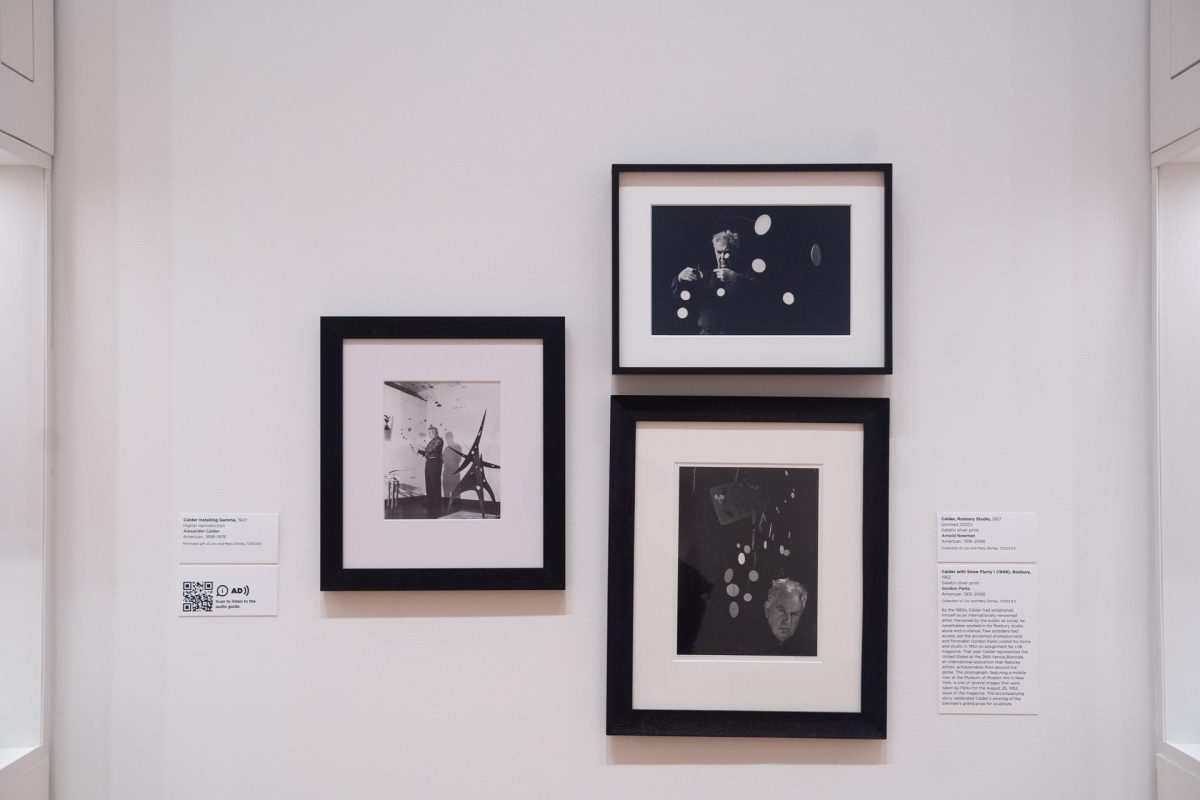Calder Smartphone Tour: Group of Photos

By the 1950s, Alexander Calder had established himself as an internationally renowned artist. Although the public perceived him as a social butterfly, he preferred to work in his Roxbury, Connecticut studio alone and in silence. Few outsiders were granted access to the artist’s workspace. Among them, however, was acclaimed photojournalist and filmmaker Gordon Parks.
Parks visited Calder in his home and studio in 1952 on assignment for Life magazine. That year, Calder represented the United States at the 26th Venice Biennale, an international exposition that highlights global artistic achievements. This photograph, featuring a mobile now at the Museum of Modern Art in New York, is one of several images that were taken by Parks for the August 25, 1952, issue of the magazine. The accompanying story celebrated Calder’s winning of the biennale’s grand prize for sculpture.
Learn more about this work and two other photographs of Calder in his studio by tuning in to the seventh stop on the free smartphone tour of Calder: In Motion, The Shirley Family Collection at SAM. The full tour is available to explore on your own time via our SoundCloud or in our galleries by scanning the QR code next to select works in the exhibition.
Group of Photos: Calder Installing Gamma (1947), Alexander Calder, Roxbury Ct. (1957), and Alexander Calder (1952)
NARRATOR: These three photographs offer an intimate glimpse of Calder at work.
Let’s focus on the image to the far right of the group. It was taken by the important photographer and filmmaker Gordon Parks in 1952. That year, Calder had been selected to represent the United States at the Venice Biennale. Curator José Diaz:
JOSÉ CARLOS DIAZ: The Venice Biennale is sort of the Olympics of the art world where artists are chosen to represent their countries, and Calder actually won the Grand Prize that year.
This photo was taken for the August 25, 1952, issue of Life magazine and features Calder not installing an exhibition at the Venice Biennale but actually in his studio in Roxbury, Connecticut. This was a very private space, and for Life magazine—or really the American public—to see the artist behind the scenes would have been really captivating at the time.
NARRATOR: For artist Kennedy Yanko, the photographs offer a different perspective on the work.
KENNEDY YANKO: When you typically see Calder’s work, you’re looking up and you’re looking around. So your entire physical gesture and exploration of it changes. But you can see here how different it is when he’s so close to it and how he’s experienced it in the making. He’s living within the work, and he’s living within the sculpture, and I think that that’s what allowed all of these monumental sculptures to kind of continue to carry us. That sense of life and that sense of curiosity is how deeply immersed and present he was inside of the pieces.
– Lily Hansen, SAM Marketing Content Creator
Image: Installation view of Calder: In Motion, The Shirley Family Collection, Seattle Art Museum, 2023, © 2024 Calder Foundation, New York / Artists Rights Society (ARS), New York, photo: Chloe Collyer.